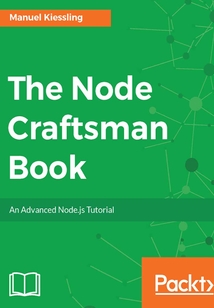目錄(73章)
倒序
- 封面
- 版權信息
- Credits
- About the Author
- www.PacktPub.com
- Customer Feedback
- Preface
- Status
- Notes on code formatting
- Intended audience
- Part 1: Node.js Basics in Detail
- Introduction to Part 1
- Working with NPM and Packages
- Test-driven Node.js Development
- Object-oriented JavaScript
- Blueprints versus finger-pointing
- A classless society
- Creating objects
- Using a simple function to create plain objects
- Using a constructor function to create objects
- Using prototyping to efficiently share behaviour between objects
- Object-orientation prototyping and inheritance
- A classless society revisited
- Summary
- Synchronous and Asynchronous Operations Explained
- Visualizing the Node.js execution model
- Blocking and non-blocking operations
- Using and Creating Event Emitters
- Introduction
- Creating your own event emitter object
- Summary
- Optimizing Code Performance and Control Flow Management Using the Async Library
- Executing expensive asynchronous background tasks in parallel
- Optimizing code structure with async
- Node.js and MySQL
- Using the mysql library
- A first database application
- Using the Streaming API
- Making SQL queries secure against attacks
- Summary
- Node.js and MongoDB
- Some MongoDB basics
- Applying CRUD operations with the low-level mongodb driver
- Retrieving specific documents using filters
- More complex update operations
- Working with indexes
- Querying collections efficiently
- Summary
- Part 2: Building a Complete Web Application with Node.js and Angular
- Introduction
- The requirements from a user's perspective
- High level architecture overview
- Setting up the development environment
- Milestone 1 – A First Passing Test Against the Server
- Milestone 2 – The API Responds with Actual Database Content
- Abstracting database access
- Ensuring a clean slate for test runs
- Completing the first spec
- Milestone 3 – Setting the Stage for a Continuous Delivery Workflow
- Introducing automatic database migrations
- Milestone 4 – Giving Users a Frontend
- Setting up frontend dependencies through bower
- Serving the frontend through the backend server
- Adding the frontend code
- Adding AngularJS view templates
- Milestone 5 – More Work on the Backend
- Adding a route for retrieving categories
- Making the backend recognize different environments
- Milestone 6 – Completing the Backend and Finalizing the Application
- Creating the route for adding new keywords
- Creating the route for updating keywords
- Creating the route for deleting keywords
- Summary 更新時間:2021-07-02 23:37:01
推薦閱讀
- 操作系統實用教程(Linux版)
- Learning Android Intents
- Mastering Distributed Tracing
- 蘋果電腦玩全攻略 OS X 10.8 Mountain Lion
- BPEL and Java Cookbook
- Windows Phone 7.5 Data Cookbook
- Linux就該這么學
- jQuery UI Cookbook
- Fedora 12 Linux應用基礎
- Building Telephony Systems With Asterisk
- UI設計手繪表現從入門到精通
- Multi-Cloud for Architects
- Android NDK Beginner's Guide
- 電腦辦公(Windows 7+Office 2016)入門與提高
- 電腦辦公(Windows 7 + Office 2013)入門與提高
- 樹莓派+傳感器:創建智能交互項目的實用方法、工具及最佳實踐
- Selenium Framework Design in Data-Driven Testing
- 嵌入式Linux設備驅動程序開發指南(原書第2版)
- 構建高可用Linux服務器
- Windows 10深度攻略
- LAMP&OpenLDAP圖書館Web應用平臺構建與開發
- Responsive Web Design with HTML5 and CSS
- 24小時學會系統安裝與重裝
- Apache SkyWalking實戰
- 深入淺出Docker
- 開源安全運維平臺OSSIM疑難解析:提高篇
- 可伸縮架構(第2版):云環境下的高可用與風險管理
- Windows 2000中文版應用基礎
- Windows Server 2012 活動目錄項目式教程
- RHEL8系統管理與性能優化


